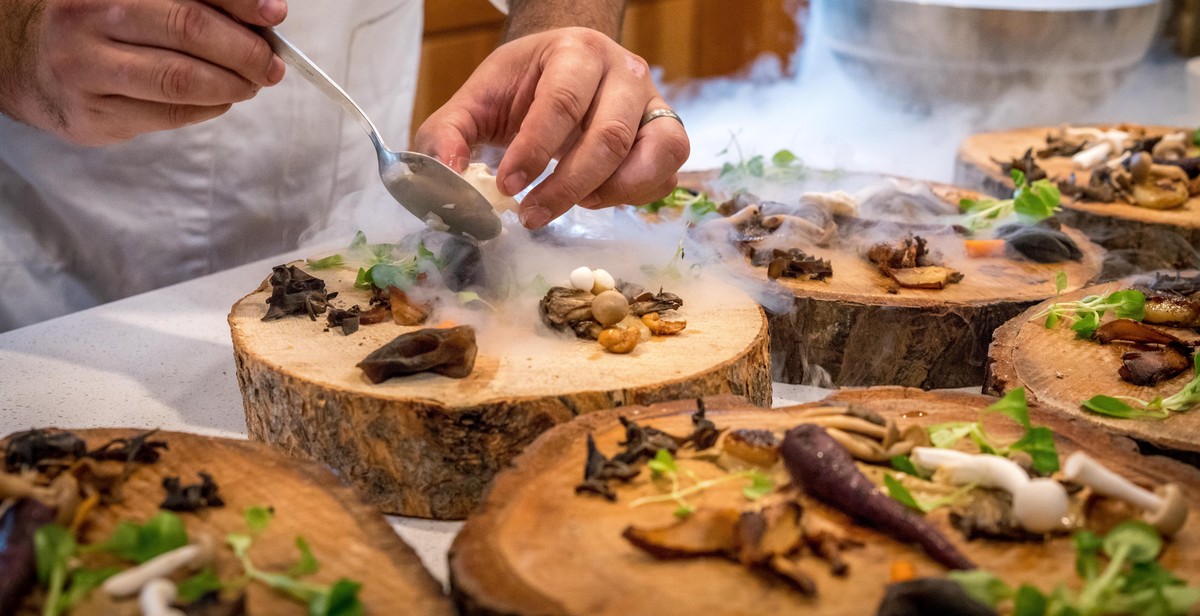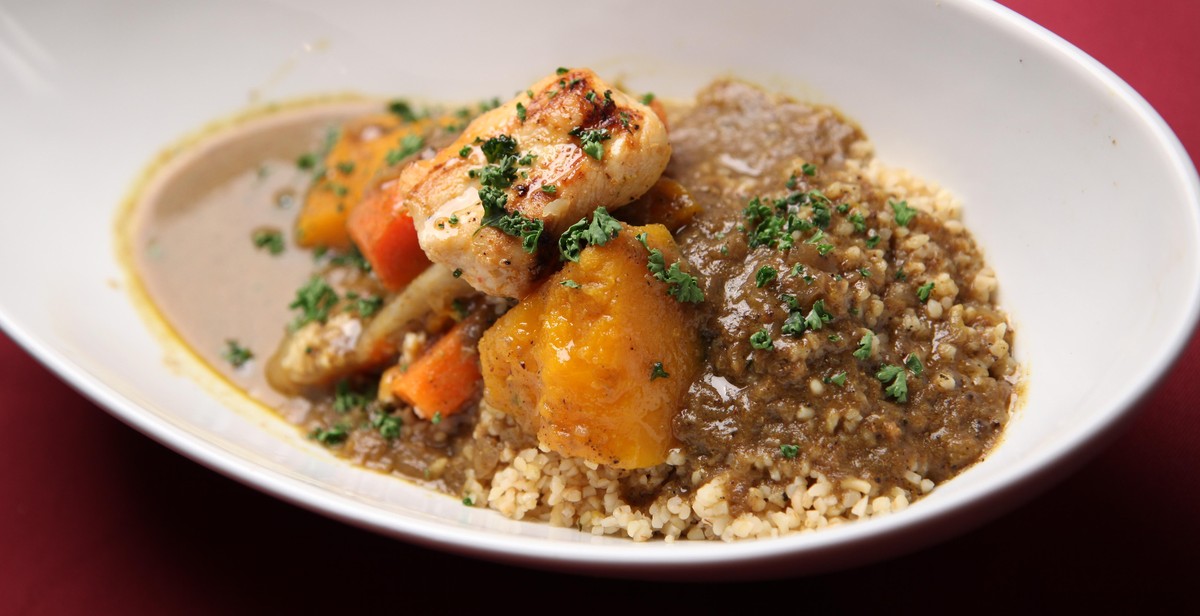How to Make Vegetable Curry: Flavorful and Nutritious Indian-inspired Dish
Vegetable curry is a delicious and nutritious Indian-inspired dish that is packed with flavor and health benefits. It is a versatile dish that can be made with a variety of vegetables, making it a great way to use up any vegetables that may be lingering in your fridge.
What is Vegetable Curry?
Vegetable curry is a dish that typically consists of a variety of vegetables cooked in a spiced sauce made with a blend of aromatic spices, such as cumin, coriander, turmeric, and garam masala. The sauce is usually made with a base of onions, garlic, and ginger, and tomatoes are often added to give it a tangy flavor. Coconut milk or yogurt is also commonly added to give the curry a creamy texture.
Why Make Vegetable Curry?
Vegetable curry is a great way to incorporate more vegetables into your diet in a tasty and satisfying way. It is a perfect dish for vegetarians and vegans, as it is packed with plant-based protein and fiber. Additionally, it is a budget-friendly meal that can be easily made in large batches and reheated throughout the week.
What Makes Vegetable Curry Nutritious?
Vegetable curry is a nutrient-dense dish that is rich in vitamins, minerals, and antioxidants. The variety of vegetables used in the dish provides a range of nutrients, such as vitamin C, vitamin A, potassium, and fiber. The spices used in the sauce also offer health benefits, as they have anti-inflammatory and antioxidant properties.
In conclusion, vegetable curry is a flavorful and nutritious dish that is easy to make and perfect for a quick and healthy meal. In the following sections of this article, we will provide a step-by-step guide on how to make vegetable curry at home, as well as some tips and tricks to elevate the dish to the next level.

Ingredients
Vegetable curry is a delicious and nutritious Indian-inspired dish that is easy to make with the right ingredients. Here are the ingredients you need:
Vegetables
- 1 large onion, chopped
- 2 cloves garlic, minced
- 1 teaspoon ginger, grated
- 1 large potato, peeled and cubed
- 1 large carrot, peeled and sliced
- 1 red bell pepper, chopped
- 1 cup green beans, trimmed and cut into 1-inch pieces
- 1 cup cauliflower florets
- 1 cup frozen peas
Spices
- 1 tablespoon curry powder
- 1 teaspoon ground cumin
- 1 teaspoon ground coriander
- 1/2 teaspoon turmeric
- 1/2 teaspoon paprika
- 1/4 teaspoon cayenne pepper
- 1/4 teaspoon ground cinnamon
Oil
- 2 tablespoons vegetable oil
Other Ingredients
- 1 can (14 ounces) diced tomatoes
- 1 can (14 ounces) coconut milk
- 1/2 cup vegetable broth
- 1 tablespoon brown sugar
- 1 teaspoon salt
- 1/2 teaspoon black pepper
- 1/4 cup fresh cilantro leaves, chopped
Make sure to have all the ingredients ready before you start cooking. With these ingredients, you will be able to make a delicious and flavorful vegetable curry that is perfect for any occasion.

Preparation
Making a delicious vegetable curry requires proper preparation of both the vegetables and the spices. Follow these steps to ensure that your curry turns out flavorful and nutritious.
Preparing the Vegetables
The first step in making vegetable curry is to prepare the vegetables. You will need a variety of vegetables such as potatoes, carrots, cauliflower, peas, and bell peppers. Wash and chop the vegetables into bite-sized pieces and set them aside. If you want to save time, you can also use frozen vegetables instead of fresh ones.
- Wash and chop the vegetables into bite-sized pieces
- Set aside or use frozen vegetables
Preparing the Spices
Spices are what give vegetable curry its distinctive flavor. To prepare the spices, you will need the following:
| Spice | Amount |
|---|---|
| Cumin seeds | 1 teaspoon |
| Coriander seeds | 1 teaspoon |
| Turmeric powder | 1/2 teaspoon |
| Ground cumin | 1/2 teaspoon |
| Garam masala | 1/2 teaspoon |
Heat a pan over medium heat and dry roast the cumin and coriander seeds until fragrant. Let them cool and then grind them into a fine powder. Mix the powdered spices with turmeric, ground cumin, and garam masala and set aside.
- Dry roast cumin and coriander seeds until fragrant
- Grind into a fine powder
- Mix with turmeric, ground cumin, and garam masala
Cooking the Curry
Now that the vegetables and spices are prepared, it’s time to cook the curry. Follow these steps:
- Heat oil in a pan and add chopped onions. Fry until golden brown.
- Add chopped garlic and ginger and fry for another minute.
- Add the powdered spices and fry for a minute until fragrant.
- Add the chopped vegetables and stir well to coat them with the spice mixture.
- Add enough water to cover the vegetables and bring to a boil.
- Reduce heat and simmer until the vegetables are tender, stirring occasionally.
- Garnish with fresh coriander and serve hot with rice or naan bread.
By following these steps, you can make a flavorful and nutritious vegetable curry that is sure to impress your family and friends.

Tips for Making Great Vegetable Curry
Vegetable curry is a popular Indian-inspired dish that is flavorful, nutritious, and easy to make. Here are some tips to help you create the perfect vegetable curry:
1. Use Fresh Ingredients
The key to making a great vegetable curry is using fresh ingredients. Fresh vegetables will have more flavor and nutrients than frozen or canned ones. Look for vegetables that are in season and use organic produce if possible.
2. Choose the Right Spices
The right spices can make or break your vegetable curry. Some essential spices for curry include cumin, coriander, turmeric, and garam masala. You can customize the spice level to your liking by adjusting the amount of chili powder or cayenne pepper you use.
3. Don’t Overcook the Vegetables
Overcooked vegetables can turn mushy and lose their flavor. It’s important to cook the vegetables just until they are tender, but still have some bite. If you’re using vegetables that cook quickly, like spinach or peas, add them towards the end of the cooking process.
4. Use Coconut Milk for Creaminess
Coconut milk adds a creamy texture and sweet flavor to vegetable curry. It’s a great alternative to dairy cream and is also vegan-friendly. Be sure to use full-fat coconut milk for the best results.
5. Let the Curry Rest
After the curry is finished cooking, let it rest for a few minutes before serving. This allows the flavors to meld together and makes for a more flavorful dish.
6. Serve with Rice or Naan
Vegetable curry is traditionally served with rice or naan bread. The starch helps to balance out the spice and adds a nice texture to the dish. You can also serve it with quinoa or cauliflower rice for a healthier option.
| Use fresh ingredients | Choose the right spices | Don’t overcook the vegetables |
| Use coconut milk for creaminess | Let the curry rest | Serve with rice or naan |

Conclusion
Vegetable curry is a delicious and nutritious Indian-inspired dish that you can easily make at home. By following the steps outlined in this article, you can create a flavorful and healthy meal that is sure to satisfy your taste buds.
One of the great things about vegetable curry is that it is highly customizable. You can use a variety of vegetables and spices to create different flavor profiles and adjust the heat to your liking. Whether you prefer mild or spicy, there is a vegetable curry recipe out there for you.
Another benefit of vegetable curry is that it is packed with nutrients. The combination of vegetables, spices, and coconut milk provides a wide range of vitamins, minerals, and antioxidants. Plus, it is a great way to incorporate more plant-based meals into your diet.
Overall, learning how to make vegetable curry is a valuable skill that can benefit both your health and your taste buds. So next time you’re in the mood for a flavorful and nutritious meal, give vegetable curry a try!
| Pros | Cons |
|---|---|
|
|
